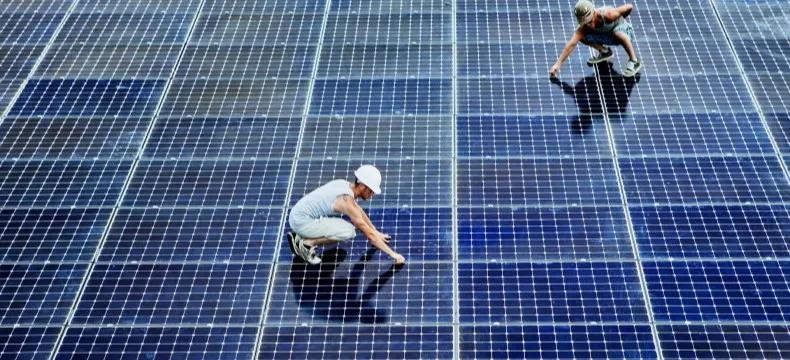
Power for data centers: breaking through the transmission bottleneck and enabling greater sustainability
23 February 2024
Reading time: 3 min
The rapid growth of data centers, together with the push towards electrification from the transportation and industrial sectors, are expected to result in unprecedented stress on the US electrical grid. The problem isn’t simply lack of supply. Spurred on by the Inflation Reduction Act (IRA), there is an avalanche of solar and wind projects in various stages of the development pipeline.

For most players on either side, they currently face the same bottleneck: interconnection wait times that can last up to five years. This gridlock is primarily due to lack of adequate transmission infrastructure that not only connects renewable generation to load centers but, more importantly, can balance the intermittent nature of such supply with the more stable profile of demand.
This incompatibility is also what has kept most data centers from engaging in behind-the-meter arrangements to bypass interconnection queues and meet their sustainability goals. Instead, they still connect to the local grid but enter into purchase agreements with remote projects to claim Renewable Energy Credits.
Using the market-based method of accounting under the GHG Protocol, this approach can result in zero reportable Scope 2 emissions. However, in reality the local communities are frequently impacted by higher actual emissions as a result of increased output from nearby fossil-fueled plants that are called on to meet data centers’ baseload demand.
Loudoun County in Northern Virginia is one example. It is home to more than 100 data centers within a regional hub that processes 70% of the world’s internet traffic. To date, the county does not have a single utility-scale renewable project despite many of the data center owners claiming to have 100% renewable-powered facilities.
To meet the local demand, an 800MW+ natural gas-fired combined cycle plant was commissioned in 2017, and the local utility, Dominion Energy, has announced that at least 1,447MW of additional gas-fired power projects will be needed in the coming years as the hub continues to grow.
The methodology that market-based GHG accounting offers may be coming to an end. Lawmakers in Loudoun County recently recommended a new zoning bill that would require all data center developers to seek approval for such use, giving them greater say in evaluating the facilities’ carbon and resource impacts. Similar legislative changes are pending in other hubs across the country.
A small number of players in the data center sector have seized this situation as an opportunity to differentiate through innovative localized power solutions. While some are exploring hydrogen and small modular nuclear reactors for the medium to long-run, others have turned to existing but underutilized renewable resources such as geothermal and hydropower as low-latency AI applications require infrastructure expansion outside of the existing hubs. Advances in battery storage coupled with photovoltaic solar and smart control systems have also enabled data centers to support bi-directional flow of energy to and from the grid.
Thirty miles north of Loudoun County, plans are underway to transform a decommissioned coal-fired power plant into just such a microgrid.
There is hope yet.
Cindy Jia is a seasoned energy industry professional with a nearly 15-year career spanning across power project finance, technology development, and business strategy. In her current role as a Director in ING Americas’ Sustainable Finance team, she advises clients in the energy and energy-intensive sectors, including renewables, data centers, and HVAC equipment manufacturers, on financing solutions to advance sustainability projects and goals.
ING Americas is Metro Connect USA’s official 2024 Sustainability Partner. ING Americas is the brand name of ING’s Wholesale business in the Americas region, which operates in the U.S. through ING Financial Holdings Corporation and its subsidiaries. We offer a full array of wholesale financial products, such as commercial lending, financial markets and advisory products and services in the U.S. to corporate and institutional clients. We know being sustainable is not just about reducing our own impact, it’s also in the choices we make—as a lender, in our financing, and through the services, we offer our customers. That’s why sustainability is inherent to our purpose of empowering people to stay a step ahead in life and in business.
Please reach out if you would like to learn more about ING’s offerings for digital infrastructure and energy/sustainability solutions.